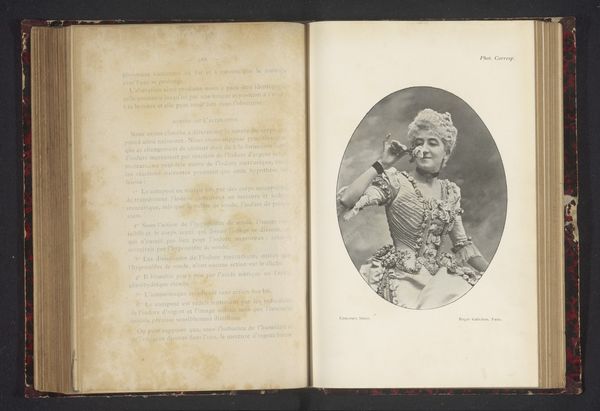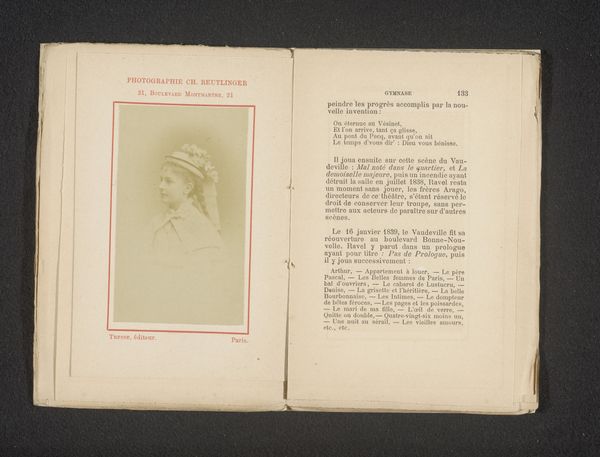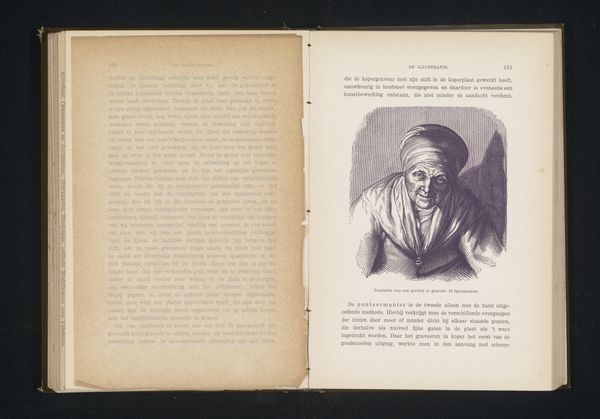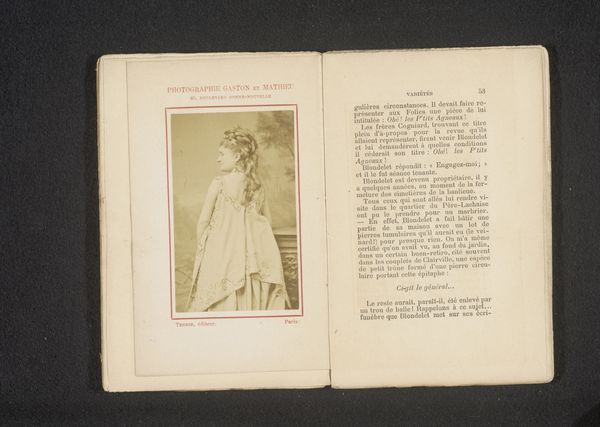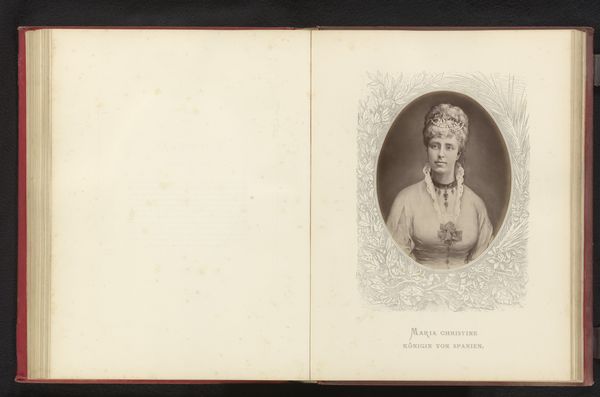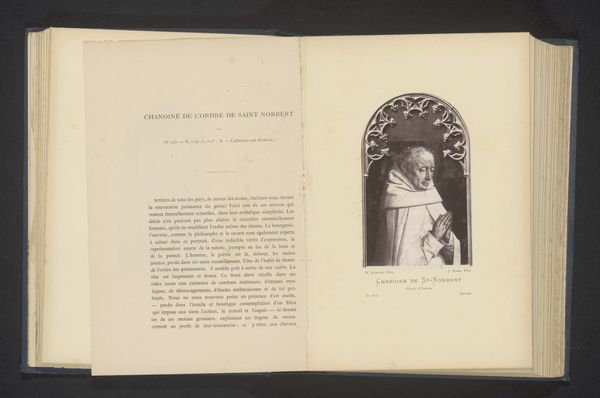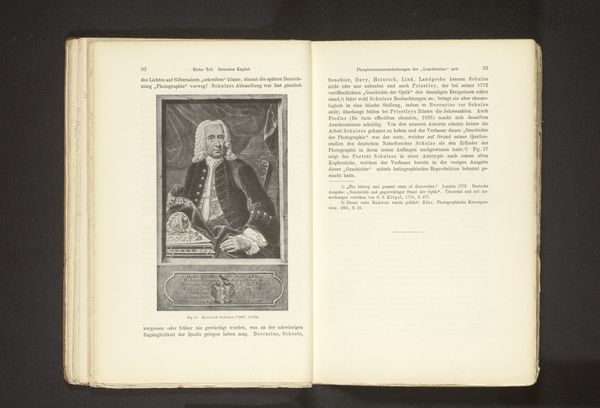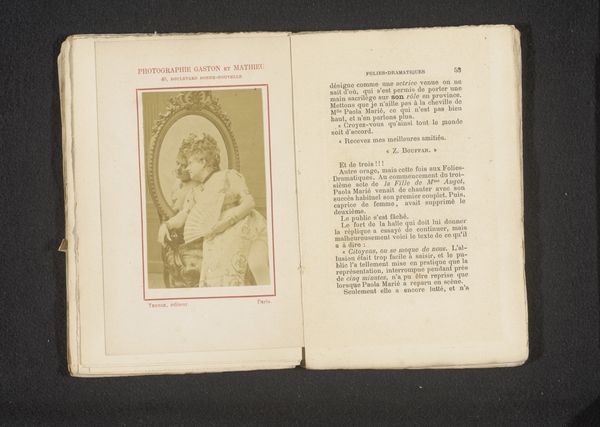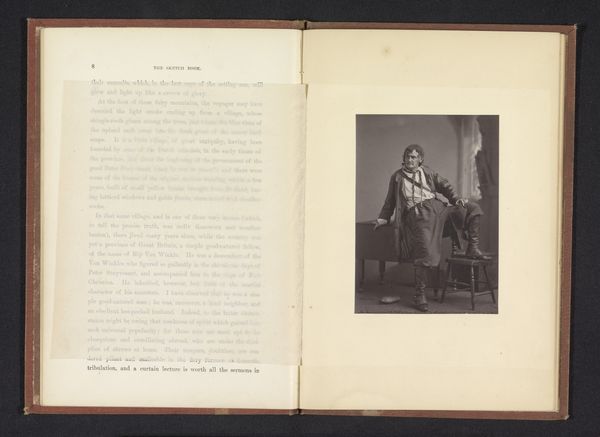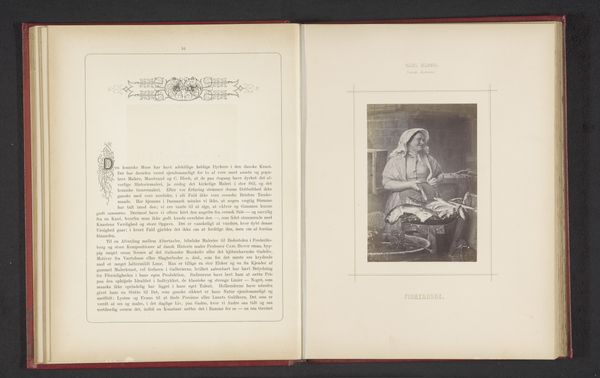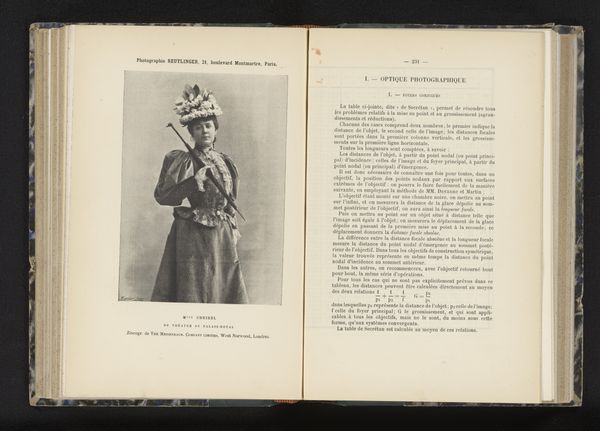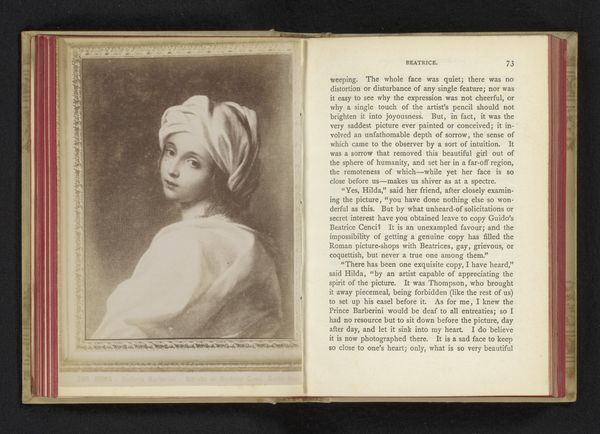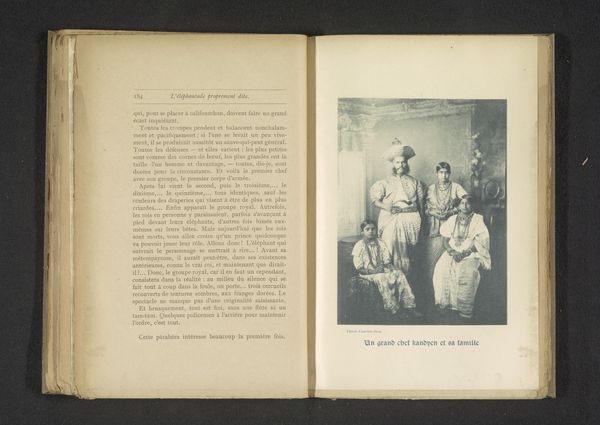
paper, photography, albumen-print
#
portrait
#
paper
#
photography
#
albumen-print
Dimensions: height 89 mm, width 55 mm
Copyright: Rijks Museum: Open Domain
Editor: Here we have a photograph entitled "Studioportret van Eugénie Mauduit," taken before 1874 by Charles Reutlinger. It's an albumen print on paper, and is now held at the Rijksmuseum. The subject gazes off to the side with a serious expression. There is something a bit old-fashioned about its presentation in this album-like spread. How do we interpret this work in its historical moment? Curator: That's a keen observation. The presentation is very deliberate. Notice how the photograph is part of a larger object, an open book detailing operas? This highlights the subject’s, likely an opera singer's, social role and its deliberate construction. Reutlinger was a society photographer catering to a specific clientele. Think about who these portrait albums were for. Who consumed them, and what social functions did they serve? Editor: So, this wasn’t just about capturing a likeness, but also about positioning Mauduit within a certain social framework? Was photography understood differently then? Curator: Precisely. Photography in this period was often linked to notions of social status and public identity. It’s worth noting that access to photography was not widespread; it signified a degree of affluence and visibility. Reutlinger was shrewd in linking this photographic portrait to contemporary reviews about opera. This also creates context beyond this photograph by relating its subject to the performance culture in Paris. Editor: I see, the bordering text really adds a layer to this simple photograph. It really captures a fleeting moment, but in a specific environment. Curator: Absolutely, and considering the Rijksmuseum's acquisition of this piece, we can analyze how the institutional context shapes its reception today. We're no longer simply admiring a portrait but considering its historical and cultural significance as it now sits in the context of a Dutch national collection. It becomes part of a broader narrative. Editor: I’ve certainly never considered how something like that may affect its modern interpretation. It all connects, doesn't it? I'll remember that. Curator: Exactly, and that interplay between the subject, the artist, and its historical setting allows us a glimpse into the cultural landscape of the past.
Comments
No comments
Be the first to comment and join the conversation on the ultimate creative platform.
